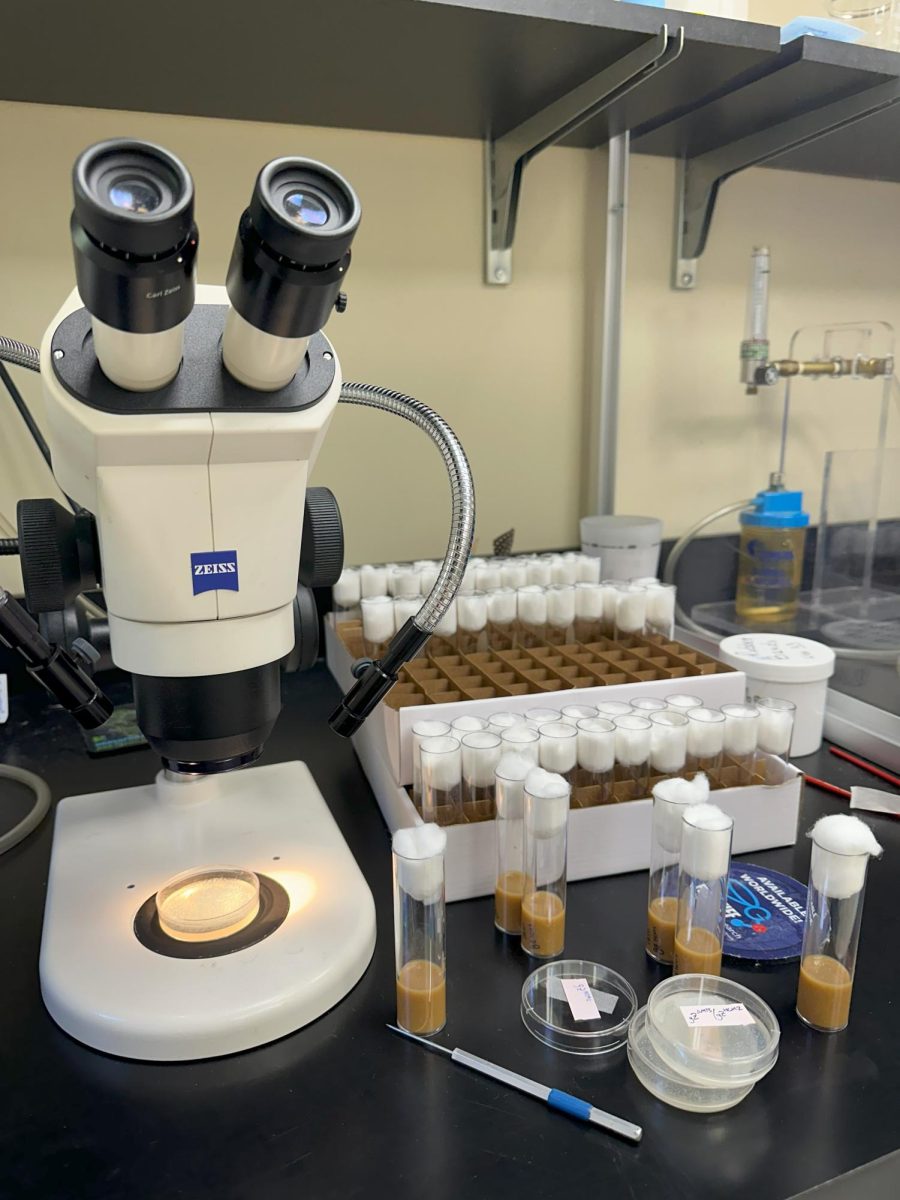Nicole Cracovia, FCRH ’26, is investigating the link between RNase Z to neurodegenerative disorders. Her primary focus is establishing a causal connection between a mutant allele of RNase Z and neuromuscular malfunction. Her experiments involve testing on flies, and she hopes her findings can provide insight on benefits for humans.
“RNase Z is used to process primary tRNA transcripts, so, essentially, tRNA transcripts are used to read mRNA and ultimately produce proteins or protein products,” Cracovia said. “RNase Z is really then essentially mRNA being turned into protein products the body needs. And so the research I’m doing looks at what happens when there’s a mutation.”
Fordham University labs use ELANCast nine technologies to further research. “The research I’m doing looks at what happens when there is a mutation,” said Cracovia. “Using ELANCast nine technology, I can make mutations in neuron specific cells. This way protein products won’t be made only by neurons.” Her research focuses on phenotypic outcomes of these RNA C mutants.
Cracovia is working on two different experiments. “For the first one, we eject flies and look at their reflexes,” she said. “By ejecting them, they’re going to get that stimulus that they’re falling and then we see how long it takes for the stimulus to reach the motor function. And so they would actually have, like a motor effect, but it’s expected with some RNase Z mutant to take longer.”
Each vial she works with has about 50 flies separated by male and female. Since she focuses on neurodegenerative disorders, the expectation for results is that reflexes get progressively old.
“We test on 10-day age flies and 21-day flies,” Cracovia said. “If we notice that neurodegeneration is occurring, like the amount of flies are taking further stimulus for pathway to reach the actual motor effect, if we notice that that is taking longer so neurodegeneration is occurring. Then there are implications that the RNase Z mutation is what is affecting that. So, since RNase Z is very conserved, it’s in flies and humans, there are greater implications that a mutation of the RNase Z found in humans would lead to the same results.”
This would establish a link between neurodegeneration caused by RNase Z and motor dysfunction. Cracovia’s findings could be used in the future for development therapies to help improve the quality of life for humans affected by these disorders.
She is currently in the process of conducting a flight test, ejecting flies and recording their response to falling stimulus. Once the flight test is completed, she looks at the numbers for data analysis. “We’re also looking at another control group (GZ Plus) to make sure everything’s adding up,” she said. “This control group, GZ Plus, is essentially the RNase Z gene that has been knocked out and replaced by the RNA C gene. It’s not necessarily the same as just like wild type fly with no mutations.”
Cracovia’s ultimate goal is to be a physician’s assistant in neurology, finding how the brain works and neuromotor pathways interesting. Cracovia shares how her late aunt had a neurodegenerative disorder and how she did not understand why her aunt would have tremors. “With the CRISPR-Cas9 technologies that we have available to us, it’s very promising for these future therapies to be developed to help people,” she said.














































































































































































































Ann Cracovia • Oct 26, 2024 at 7:03 pm
We look forward to seeing a positive outcome to this scientific study. We are accepting of the shaking hands, the forgetfulness, etc. Having a study like this gives us HOPE. Maybe Aging isn’t so bad. Keeping positive.